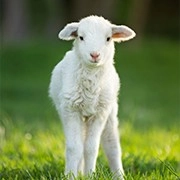Children's Motor Skills

There are two parts to the development of a child's motor skills: one is somatic movement, which is responsible for controlling the body; the other is called fine motor, or small muscle movement.
The essence of fine motor movements is the ability to coordinate hand-eye-brain.
Gross motor, which includes balancing movements of the neck and lumbar muscles as well as crawling and walking, running and throwing, and jumping.
During a child's development, attention should be paid to fostering the overall development of various abilities, including promoting the normal development of motor skills.
Children's motor ability is an important indicator of the maturity level of the nervous system.
American exercise physiologists, in general, divide the development of a child's motor ability into four stages:
From these 4 aspects of anti-aging, essential oils help you "reverse growth"!
Don't let air humidifiers become "bacteria breeders".
You can choose a sofa that suits the needs of your family and pets.
Memory lapses affect all ages in the digital era; a balanced approach is the key to retention.
Master high heels, conquer discomfort, and stay stylish with these tips!
Unlocking the secrets to hydrated skin in chilly weather.
1. Stage 1: birth - two and a half years.

In this stage, the child's nervous system is developing, and some basic motor functions are being formed.
For example, crawling, walking, grasping, hitting, pushing, blinking, shaking the head, talking, making various facial expressions, and so on.
All these basic abilities will become the basis for the child's future development of intelligence and physical ability.
2. Stage 2: two and a half years old - five and a half years old "early childhood period".
At this stage, the child's nervous system is further developing and approaching maturity.
Basic motor functions are close to being perfected, and basic motor skills such as running, jumping, kicking, and throwing are beginning to take shape.
The child's physical ability continues to develop and can accept some low-intensity exercise.
3. Stage 3: Transitional Functional Movement Period of "Late Childhood".
This stage is also traditionally known as the children's sports stage.
The child participates in a variety of children's sports, such as children's soccer, children's basketball, and so on.
Children's sports are different from adult sports in that they are not as competitive or intense. However, children's sports programs provide an opportunity for the full development of the child's motor functions.
In sports, the child's ability to jump, run, kick, throw, etc., can be comprehensively utilized and developed.
4. Stage 4: Special Motor Talent Stage

The normal level of development at this stage should be towards the stage of "special motor function development".
Generally speaking, the age of two to ten is the most important period for laying the foundation and developing a child's basic motor skills.
Some parents want their children to be ball players and start training their children in special skills when they are still very young.
Before the child's basic athletic ability is fully developed, special skills training may hurt the child.
On the contrary, some parents do not allow their children to exercise too much for fear of injury so their children miss a good opportunity to develop their motor skills.
For the healthy development of the child's body and mind, parents must grasp the "key moment" to develop the child's motor skills.

 · Lifestyle team
· Lifestyle team